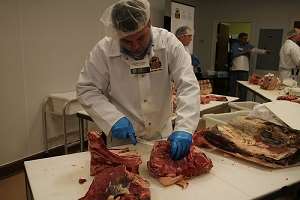The battle against E. coli continues by researchers across the country. Kansas State University’s Dr. Randy Phoebus, is one of those working hard to try to reduce E. coli incidents within the beef cattle industry. He spoke with Radio Oklahoma Ag Network Farm Director Ron Hays about the last six years of research that has been conducted by 17 different institutions working in concert to combat this damaging pathogen.

“It actually center on beef production - feedlots, calves, veal,” Phoebus said. “Everything that you can think about related to the beef system.”
Before researchers began to study and try to understand the organism back in the mid-1990s when it was first declared an adulterant in ground beef by the USDA, not much was known about E. coli. Six years later though after this project was undertaken, funded by the USDA, Phoebus reports that by and large, most strains of the organism share relatively similar profiles.
“That was very important to know,” Phoebus said, “because all of the technologies and protocols that we’ve put in place over the years should control these other Escherichia the same way,” which he notes has been extremely successful.
Click here to see more...